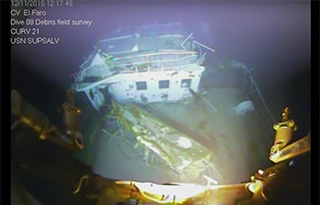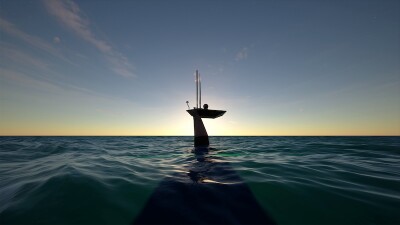The National Transportation Safety Board will mount a second expedition in April to search the sea floor 15,000’ down for the voyage data recorder from the El Faro, the 790’ ro/ro containership that sank Oct. 1 during hurricane Joaquin with the loss of all 33 crew. The two-week mission in April will cover approximately 13.5 sq. mi. east of the Bahamas using SENTRY, an autonomous underwater vehicle (AUV) carried by the 274’x52’6”x19’ research vessel Atlantis.
Operated by the Woods Hole Oceanographic Institution (WHOI) in Massachusetts, the Atlantis is owned by the U.S. Navy, which last fall lent its 226’x42’x15’ fleet tug Apache to the first attempt at locating the data recorder.
The Navy crew, NTSB investigators and contractors located the El Faro on Oct. 31, and video taken with a remotely operated vehicle showed the navigation bridge structure and the deck below it had separated from the ship – including the mast base where the voyage data recorder was located.
Like the so-called “black box” data recorders on commercial aircraft, voyage data recorders on ships, voyage data recorders can save information crucial to accident investigations. In the case of El Faro, its recorder was capable of recording conversations and sounds on the navigation bridge.
NTSB investigators also want to get more extensive documentation of the wreck and its surrounding debris field, which could provide investigators with important evidence as they seek to understand the sequence of events that led to the sinking.
In addition, investigators hope to obtain high quality images of the bridge, debris field, and hull. The SENTRY vehicle can work at depths of nearly 20,000’, carrying an array of sonar, camera and other sensors. If the recorder is located, investigators will launch a second mission with a remotely operated vehicle that can retrieve it.
“The voyage data recorder may hold vital information about the challenges encountered by the crew in trying to save the ship,” said NTSB Chairman Christopher Hart. “Getting that information could be very helpful to our investigation.”





